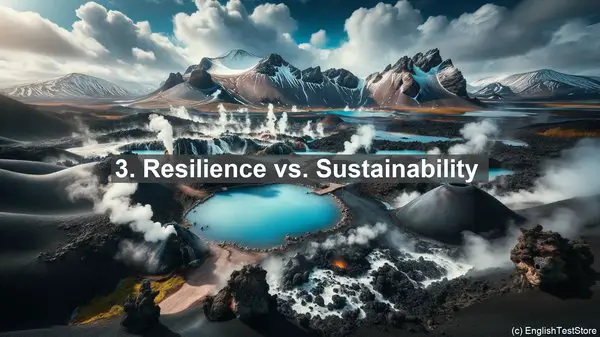Introduction
Welcome to our lesson on the top 10 commonly confused words in Disaster Risk Reduction. As students, it’s crucial to have a strong grasp of these terms, as they form the foundation of our understanding in this field.
1. Hazard vs. Risk
Often used interchangeably, hazard and risk have distinct meanings. A hazard refers to a potential source of harm, like an earthquake. On the other hand, risk is the probability of that hazard causing damage or loss. Understanding the difference is essential in assessing and mitigating potential dangers.
2. Mitigation vs. Preparedness
While both terms relate to reducing the impact of disasters, they differ in timing. Mitigation focuses on actions taken before a disaster to prevent or minimize its effects. Preparedness, on the other hand, involves the steps taken in advance to ensure an effective response when a disaster strikes.
3. Resilience vs. Sustainability
Resilience and sustainability are often used in the context of long-term planning. Resilience refers to the ability of a system or community to bounce back and recover quickly from a disaster. Sustainability, on the other hand, focuses on ensuring the long-term well-being of the environment and society.
4. Evacuation vs. Shelter-in-Place
During a disaster, two common strategies are evacuation and shelter-in-place. Evacuation involves moving people away from the affected area to a safer location. Shelter-in-place, on the other hand, means staying indoors and taking necessary precautions. The choice between the two depends on the specific situation and guidance from authorities.
5. Response vs. Recovery
In the aftermath of a disaster, response and recovery are two distinct phases. Response involves the immediate actions taken to address the situation, such as search and rescue. Recovery, on the other hand, focuses on the long-term rebuilding and restoration of the affected area.
6. Vulnerability vs. Capacity
When assessing a community’s preparedness, vulnerability and capacity are key considerations. Vulnerability refers to the susceptibility of a community to a hazard, taking into account factors like infrastructure and social dynamics. Capacity, on the other hand, relates to the resources and abilities available to respond effectively.
7. Adaptation vs. Mitigation
Both adaptation and mitigation are strategies to address climate change and its impacts. Adaptation involves adjusting to the changes that are already occurring. Mitigation, on the other hand, focuses on reducing greenhouse gas emissions to prevent further climate change.
8. Early Warning vs. Forecast
In the context of natural disasters, early warning and forecast are often used. An early warning system provides advance notice of an impending event, giving people time to take necessary actions. A forecast, on the other hand, predicts the general weather conditions over a specific period.

9. Recovery vs. Reconstruction
While recovery and reconstruction are related to the post-disaster phase, they differ in scope. Recovery involves the broader process of restoring the affected area, including social and economic aspects. Reconstruction, on the other hand, specifically refers to the physical rebuilding of infrastructure.
10. Mainstreaming vs. Standalone
When integrating disaster risk reduction into various sectors, two approaches are commonly used. Mainstreaming involves incorporating it into existing policies and programs. Standalone, on the other hand, refers to dedicated initiatives solely focused on disaster risk reduction.

